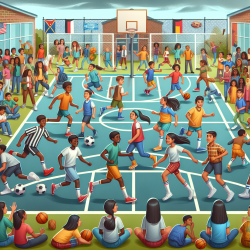Introduction
As a Special Education Director, I understand the importance of ensuring that all students have access to physical activities that promote health and well-being. A recent study titled Policy Changes to Implement Intramural Sports in North Carolina Middle Schools: Simulated Effects on Sports Participation Rates and Physical Activity Intensity, 2008–2009 provides valuable insights into how policy changes can significantly impact sports participation rates and physical activity intensity among middle school students.
Key Findings
The study conducted simulations to estimate the effects of implementing intramural sports programs in North Carolina middle schools. The findings suggest that adding intramural sports to existing interscholastic programs could lead to:
- More than 43,000 new sports participants statewide.
- A 36.75% increase in participation among economically disadvantaged students.
- An additional 819,892.65 kilogram calories expended annually statewide.
Why Intramural Sports?
Intramural sports differ from interscholastic sports as they are more inclusive, providing opportunities for all students regardless of skill level or economic background. They offer a variety of activities and are generally less expensive to organize. This inclusivity is crucial for economically disadvantaged students who may face barriers in accessing traditional sports programs.
Benefits of Implementing Intramural Sports
Implementing intramural sports can lead to several benefits, including:
- Increased overall sports participation and physical activity levels among students.
- Reduced disparities in access to school sports for economically disadvantaged students.
- Improved mental and physical health outcomes for all participants.
Encouraging Further Research
While the study provides a compelling case for the inclusion of intramural sports, further research is encouraged to explore the long-term impacts on student health and well-being. Practitioners should consider conducting local studies to assess the specific needs and benefits within their own districts.
Conclusion
As we strive to provide equitable opportunities for all students, implementing intramural sports can be a significant step forward. It not only promotes physical activity but also fosters an inclusive environment where every student can thrive. For practitioners looking to improve their skills, this research highlights the importance of policy changes that support diverse and accessible sports programs.
To read the original research paper, please follow this link: Policy Changes to Implement Intramural Sports in North Carolina Middle Schools: Simulated Effects on Sports Participation Rates and Physical Activity Intensity, 2008–2009.










